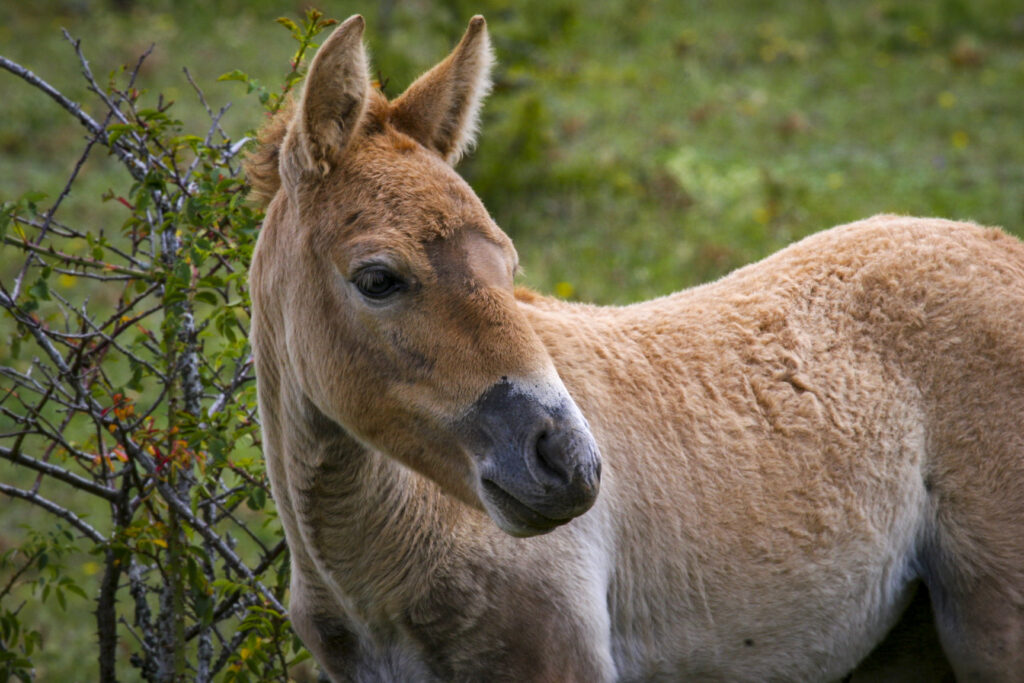French NGO TAKH is working to help the conservation of Przewalski’s horses in Europe and Asia. Membership of the European Rewilding Community will advance the group’s rewilding efforts, and improve the restoration of this iconic animal and the advantages it delivers.
Frans Schepers
Supporting Przewalski’s horse restoration
French NGO TAKH was based in 1990 to help the reintroduction of Przewalski’s horses from France to Mongolia. In 1993, TAKH oversaw the switch of 11 zoo-born horses to a 400-hectare protected web site on the Causse Méjean plateau within the Cévennes Nationwide Park. This was adopted by the translocation of twenty-two horses to the Khomyn Tal Reserve in Mongolia in 2004 and 2005, the place the herd had grown to 100 horses by 2020.
Right now, TAKH has a broader mission. The NGO goals to keep up a viable inhabitants of Przewalski’s horses on the Causse Méjean as a genetic reservoir for additional translocations, with 36 animals presently dwelling within the park. As well as, they’re working to guage and improve the useful impression of pure grazing by Przewalski’s horses in European grassland landscapes in collaboration with different rewilding initiatives, often sending and exchanging animals.
TAKH has additionally invested over 3 million euros within the renovation of an deserted village within the space, which is listed as a UNESCO World Heritage web site. Right now, the village has change into a centre for scientific change on Przewalski’s horses between a variety of stakeholders. Because the horses are one of many main points of interest within the Cévennes Nationwide Park, they assist to drive nature-based tourism and supply invaluable earnings for native communities.

Frans Schepers
Mutual advantages
TAKH has simply joined Rewilding Europe’s European Rewilding Community as its 93rd member, with community membership distributed throughout 29 European international locations. With different members concerned within the rewilding of horses and different massive herbivores to boost pure grazing, the inclusion of the French initiative will strengthen the community’s collective experience and assist the group at TAKH of their rewilding efforts.
“Membership of the European Rewilding Community will permit TAKH to broaden its Przewalski’s horse conservation mission by sharing mutual expertise with new companions and data on potential translocation websites,” says Jean Louis Perrin, TAKH’s Government Director. “It’ll make sure the viability of our herd by enabling us to translocate horses earlier than we attain the utmost capability of our personal web site, which in flip will improve the genetic variety of the worldwide Przewalski’s horse inhabitants. And it’ll speed up our plan to display the constructive impression of enormous, free-ranging herbivores on the panorama. The community may also assist to construct partnerships for science and conservation, schooling, and nature-based tourism.”

Emmanuel Rondeau
The autumn and rise of the Przewalski’s horse
An endangered subspecies of the wild horse (Equus ferus), the Przewalski’s horse (Equus ferus przewalskii) is the world’s final actually wild horse. As soon as regarded as the ancestor of home horses, they’re really distant cousins, with a distinct variety of chromosomes. They as soon as roamed the huge grassy plains of Eurasia in massive herds, from the Urals to Mongolia, however modifications in land use, navy exercise, searching, exhausting winters, and seize drove them to extinction. The final sighting of a wild Przewalski’s horse was reported in 1969 in Mongolia.
By way of breeding programmes, zoos and reserves the world over have been instrumental in stopping the Przewalski’s horse from dying out altogether, and enabling the animal to make a comeback. Of the roughly 3000 Przewalski’s horses alive as we speak, all are descended from 14 founders that have been caught within the wild between 1910 and 1960. Efforts to keep up and improve genetic variety amongst Przewalski’s horse populations by way of the change of data, experience, and animals are vital to making sure the well being and viability of the subspecies.

Nelleke de Weerd
Przewalski’s horses within the Iberian Highlands
In 2023, a number of herds of Przewalski’s horses have been launched by Rewilding Spain within the Iberian Highlands rewilding panorama in Spain, sourced from the Réserve des Monts d’Azur in France, and Hortobágy Nationwide Park in Hungary. Extra horses could also be sourced from TAKH sooner or later. The horses launched within the Iberian Highlands are roaming free throughout an in depth space, the place they are going to assist to scale back the chance of wildfire, improve biodiversity, increase nature-based tourism and environmental schooling, and enhance the animal’s conservation standing.
The Iberian Peninsula was as soon as roamed by wild horses with very comparable bodily options to Przewalski’s horses, as evidenced by engravings and cave work, akin to these in Altamira. Nevertheless, these disappeared round 4000 years in the past. With livestock numbers within the Iberian Highlands panorama considerably diminished on account of rural depopulation, the Przewalski’s horses will fulfil the identical ecological function because the extinct Iberian wild horse and extra up to date domesticated herbivores. The restoration of pure processes – akin to pure grazing and scavenging – is a vital aspect of the general rewilding imaginative and prescient for the Iberian Highlands rewilding panorama, enhancing the range, resilience and performance of untamed nature, and the advantages it gives to native communities.
Let’s rewild collectively
Rewilding Europe extends a heat welcome to all European rewilding initiatives that concentrate on sensible, result-oriented rewilding and encourages them to use for European Rewilding Community membership.

















